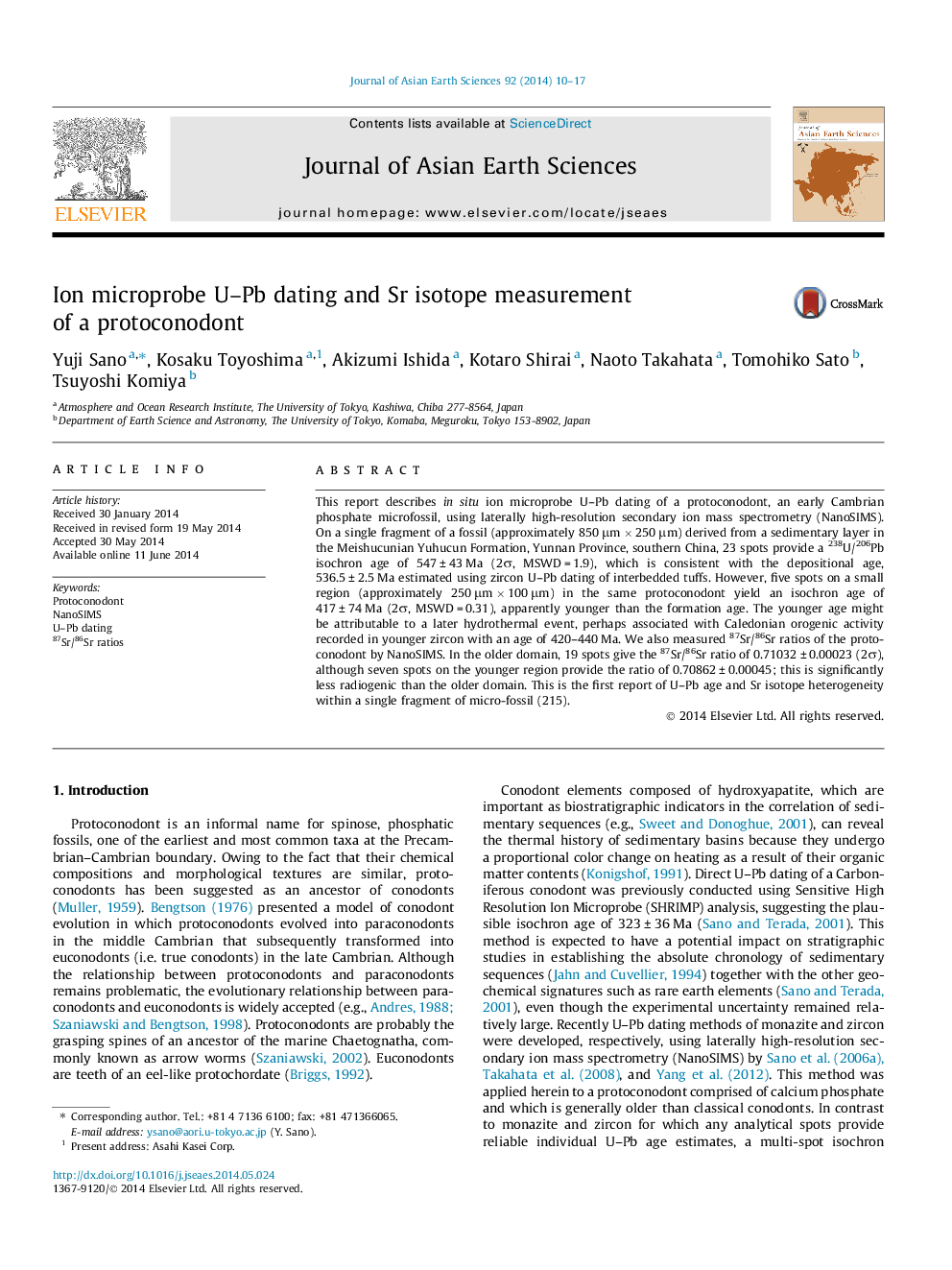| Article ID | Journal | Published Year | Pages | File Type |
|---|---|---|---|---|
| 4730518 | Journal of Asian Earth Sciences | 2014 | 8 Pages |
•U–Pb age of 547 ± 43 Ma was measured in an early Cambrian protoconodont by NanoSIMS.•Younger age of 417 ± 74 Ma was also observed in small region of the same conodont.•Two ages show heterogeneity of U–Pb system in an individual protoconodont.•87Sr/86Sr ratio of the older domain is more radiogenic than the younger.•Difference of U–Pb ages and Sr isotopes may be related to evolution of seawater.
This report describes in situ ion microprobe U–Pb dating of a protoconodont, an early Cambrian phosphate microfossil, using laterally high-resolution secondary ion mass spectrometry (NanoSIMS). On a single fragment of a fossil (approximately 850 μm × 250 μm) derived from a sedimentary layer in the Meishucunian Yuhucun Formation, Yunnan Province, southern China, 23 spots provide a 238U/206Pb isochron age of 547 ± 43 Ma (2σ, MSWD = 1.9), which is consistent with the depositional age, 536.5 ± 2.5 Ma estimated using zircon U–Pb dating of interbedded tuffs. However, five spots on a small region (approximately 250 μm × 100 μm) in the same protoconodont yield an isochron age of 417 ± 74 Ma (2σ, MSWD = 0.31), apparently younger than the formation age. The younger age might be attributable to a later hydrothermal event, perhaps associated with Caledonian orogenic activity recorded in younger zircon with an age of 420–440 Ma. We also measured 87Sr/86Sr ratios of the protoconodont by NanoSIMS. In the older domain, 19 spots give the 87Sr/86Sr ratio of 0.71032 ± 0.00023 (2σ), although seven spots on the younger region provide the ratio of 0.70862 ± 0.00045; this is significantly less radiogenic than the older domain. This is the first report of U–Pb age and Sr isotope heterogeneity within a single fragment of micro-fossil (215).
